How to Test Blue Light Glasses

Reviewed by
Beck Jinnette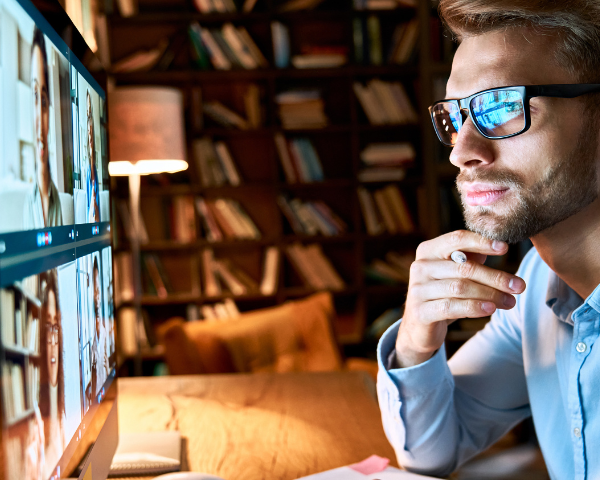
In today’s world, people stare at digital screens every day, which can cause long-term damage to our eyes.
With hundreds of brands offering blue light-blocking glasses, many people aren’t aware that their regular glasses may also have a blue light filter. How can we determine if they effectively block harmful blue light?
Thankfully, you don’t need to go to your local optometrist to find this out. Here we’ve gathered five different ways you can perform a blue light filter test from the comfort of your home.
What is blue light?
Before discussing the various at-home blue light tests, we need to learn what exactly blue light is.
Blue light is a type of light with a short wavelength and high energy that is emitted by digital screens, LED lights, and the sun.
Some blue light is natural and necessary for our well-being, but when blue light rays reach a wavelength between 415-455nm, they can hit the retina and have a detrimental effect on vision.
In this case, wearing blue light glasses can be an effective way to counteract the effect of this short-wavelength light, and protect your eyes in the long term.
Different types of blue light-blocking lenses
At first sight blue light glasses can be distinguished by their lens color. Understanding the differences between these lenses can help you choose the right ones for your needs.
Clear lenses
The most common type of blue light glasses – also known as blue light computer glasses – contain clear lenses.
These are especially useful when using your phone or laptop, or while watching TV. They are perfect for daily use because they significantly relieve digital eye strain and improve sleep quality.
Their subtle coating filters out 25-30% of all blue light while maintaining the natural color of objects.

Yellow lenses
Yellow lenses are recommended for nighttime driving because of their ability to provide better contrast.
They block 65-70% of all blue light and reduce glare from artificial light sources such as traffic lights and LED car headlights.
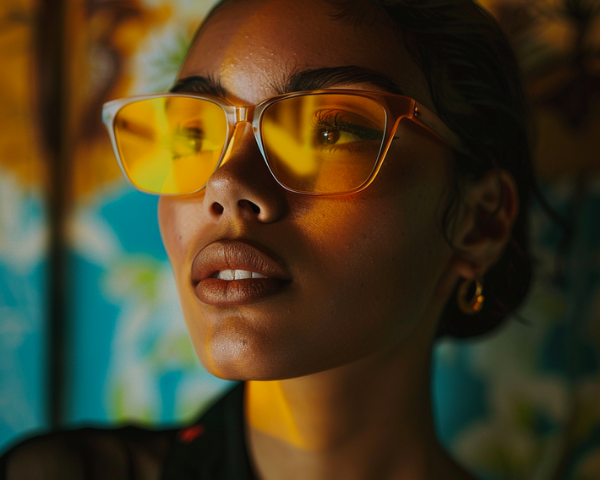
Orange & red lenses
Orange and red lenses offer the highest level of blue light protection. They filter out 99.5–99.9% of all blue light and can help improve sleep quality by minimizing the disruption of the sleep hormone melatonin.
Using these glasses in the evening or before bedtime can reduce eye strain and fatigue, especially during prolonged periods of screen time.
In comparison with yellow lenses, blue light glasses with orange and red lenses are not suitable for nighttime driving.
They can also cause color distortion making objects appear slightly different in hue. This may not be ideal for tasks that require color accuracy, such as graphic design or photo editing.

DID YOU KNOW?
Not all colored lenses effectively filter blue light; it’s the science behind the lens tint and coating that determines their efficacy in blocking harmful wavelengths.
Five ways to test blue light glasses
Testing blue light glasses doesn’t have to be complicated.
With a few simple methods, you can ensure that your glasses effectively block blue light and provide the protection you need without the need of visiting the local optician.
1. Reflection test
This is a good initial test to determine your glasses’ authenticity. Hold your blue light glasses up to a light source and observe the reflection.
If you spot a blue reflection on the lens surface, it indicates that they are effectively blocking blue light, though it doesn’t specify their level of blue light filtration.
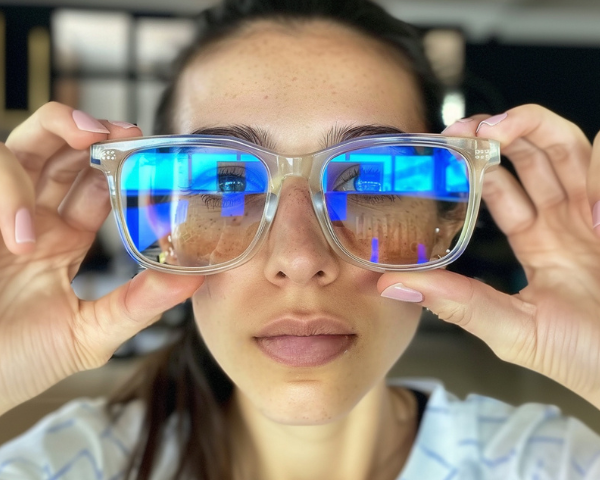
2. Pigment test
Hold your glasses up to a screen emitting white light, such as a computer screen with a white background. If the screen appears slightly yellow, it means that the glasses filter blue light.
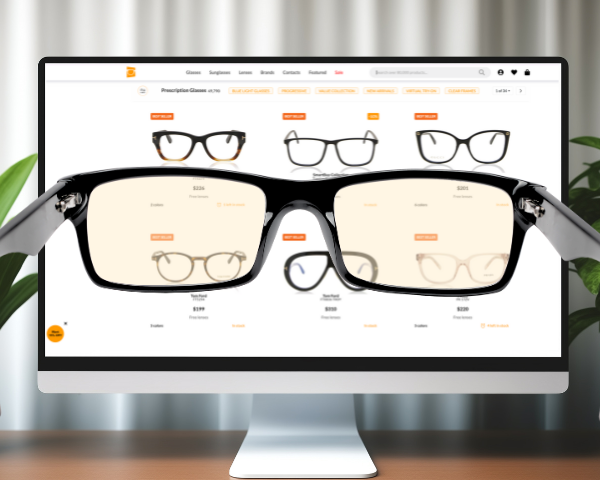
3. RGB color chart test
Use a digital device to display an RGB color chart. Put on your blue light glasses and observe the colors. If the blue light is effectively blocked, the blue section “B” should appear slightly darker or almost black and the green circle “G” should be a bit dimmed.
The image on the left represents a regular RGB color chart, while the image on the right has been modified to simulate the results when using blue light lenses.
If you have true blue light filtering eyewear, both images will appear almost identical through your glasses.
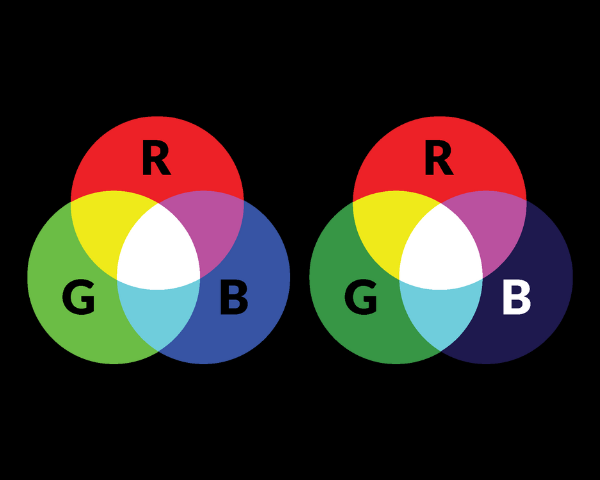
4. Black and blue circle test
Similar to the previous test, put on your blue light glasses and look at the black and blue circles. If the circles appear less bright and a dark gray color, your glasses are working as they should.
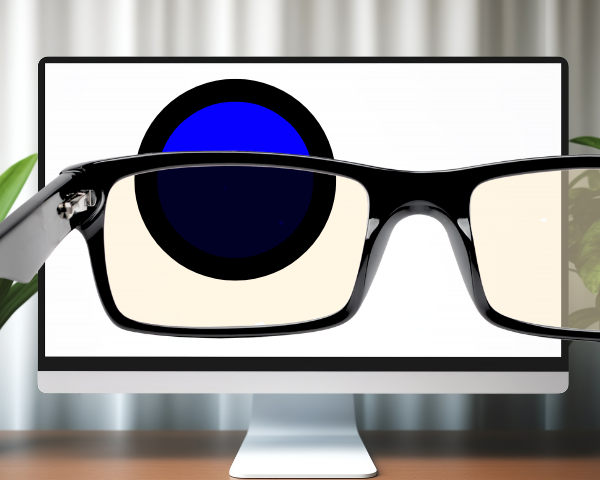
5. Spectrophotometer test
While the other methods are a great way to test your blue light-blocking lenses and can be done at home, using a spectrophotometer is the best way to accurately and precisely measure how much blue light is being filtered.
The spectrophotometer test can be done in specialized labs or optical stores. The device will generate a spectrum report indicating the percentage of blue and green light blocked by your glasses, allowing you to assess their effectiveness.
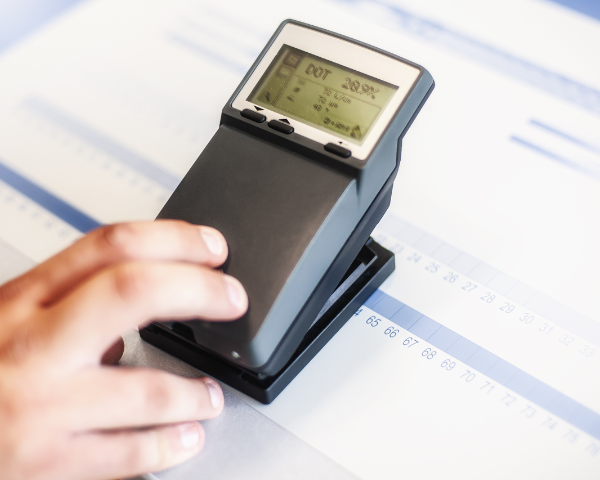
Test not to use: blue light pen test
While there are many effective at-home tests, we advise you not to use a blue light pen to test your glasses.
The blue light test pen often accompanies blue light glasses imported from China and other local manufacturers.
This test kit typically includes a blue light pen and a small white card. The instructions claim that the pen emits blue light, and when shone on the card, it supposedly appears blue.
However, this test is fake because these pens emit violet light, not blue. Lab-grade spectrometers have confirmed that the wavelength of this light falls between 380-400nm, well within the violet light spectrum, while blue light ranges from 400nm to 500nm.
Glasses that pass the pen test filter violet light but do not block the harmful blue light emitted by LED screens.
Final thoughts
There are many blue light-blocking glasses out there and before relying on them, we need to find out if they are really serving their purpose.
By performing these simple tests, you can ensure that your blue light glasses are providing the protection you need to reduce eye strain and improve your overall eye health.
If you want to learn more about eye health, you can explore our Optical Center and Lens Hub.








































